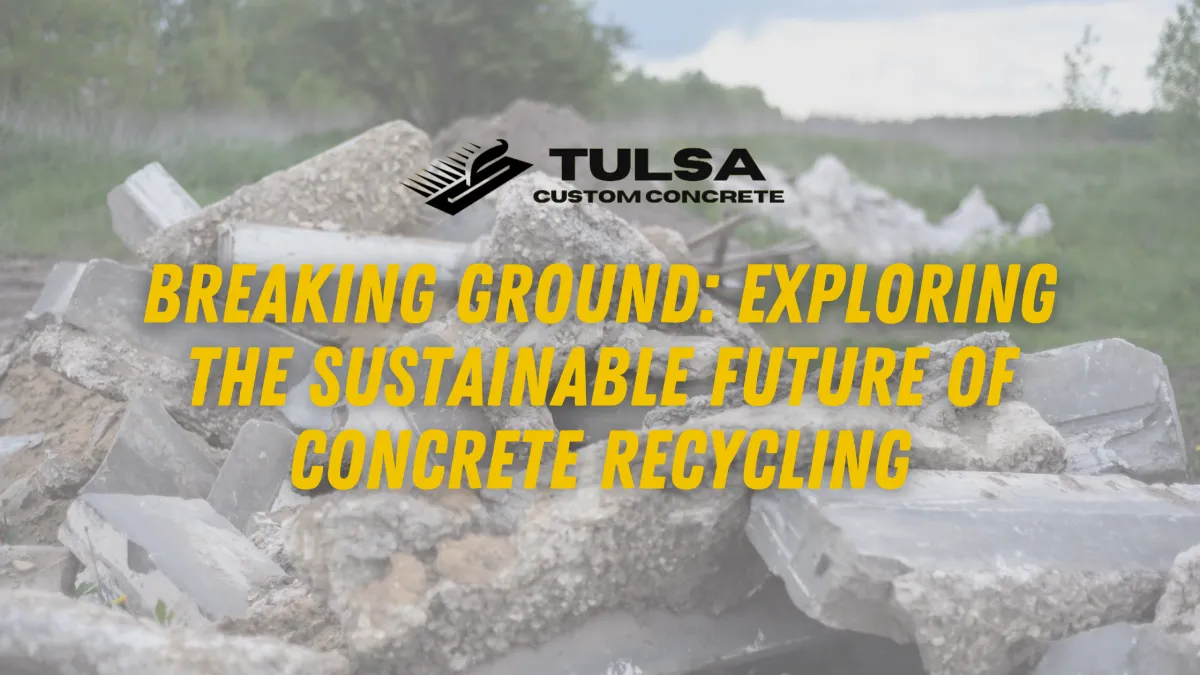918 409 1587

Blog

Breaking Ground: Exploring the Sustainable Future of Concrete Recycling
Concrete, the backbone of modern construction, has long been revered for its strength and durability. However, as the construction industry grapples with the environmental impact of its materials, concrete's recyclability has emerged as a crucial factor in shaping a more sustainable future. This blog post delves into concrete recycling, exploring its benefits, challenges, and innovative solutions that pave the way for a greener construction industry.

Traditional concrete production involves extracting raw materials such as limestone, clay, and sand, contributing to habitat destruction and biodiversity loss. Cement production is energy-intensive and releases significant amounts of carbon dioxide, a major contributor to climate change. Concrete is one of the most widely used construction materials globally, so its environmental impact cannot be ignored.
Concrete recycling is a process that involves the collection, crushing, and reuse of concrete from demolished structures or construction sites. Rather than disposing of concrete waste in landfills, recycling allows for extracting and repurposing valuable materials.
Benefits of Concrete Recycling:
Reduction of Environmental Impact: Reusing existing concrete diminishes the need for new raw materials, reducing the environmental footprint associated with traditional concrete production.
Energy Conservation: Concrete recycling consumes less energy than new concrete production. Crushing and processing recycled concrete requires less energy than extracting and processing raw materials.
Waste Reduction: Concrete recycling diverts large quantities of construction waste from landfills, reducing waste and promoting a circular economy.
Challenges in Concrete Recycling:
Contamination: Concrete recycling faces challenges related to the potential contamination of recycled concrete with other materials, such as wood, metal, or plastic. Proper sorting and processing are essential to ensure the quality of recycled concrete.
Quality Concerns: The quality of recycled concrete can vary, affecting its structural properties. Innovations in technology and research are addressing these concerns to make recycled concrete a viable alternative to traditional concrete.
Innovative Solutions:
Advanced Sorting Technologies: Cutting-edge sorting technologies, including automated systems and sensors, are improving the efficiency and accuracy of concrete recycling by facilitating the separation of different materials.
High-Quality Recycled Aggregates: Researchers and industry professionals are working on enhancing the quality of recycled aggregates to meet the performance standards required for various construction applications.
As the construction industry continues to evolve, concrete recycling stands out as a promising solution to mitigate the environmental impact of traditional concrete production. By embracing innovative technologies and adopting sustainable practices, we can build a future where concrete contributes to the strength of structures and the health of our planet. As stakeholders in the construction industry increasingly prioritize sustainability, the recyclability of concrete is poised to play a pivotal role in shaping a greener, more responsible built environment.
Quick Links
Services
Latest Feed
© Copyright 2023 |




